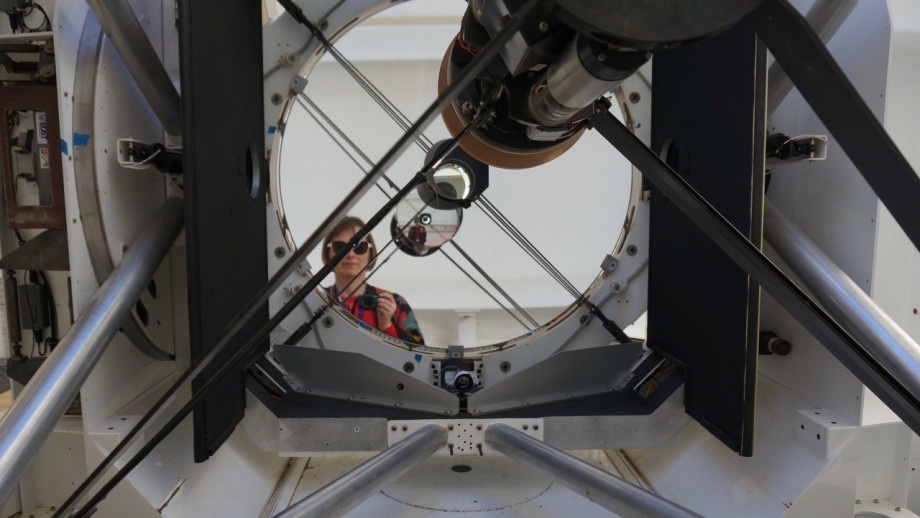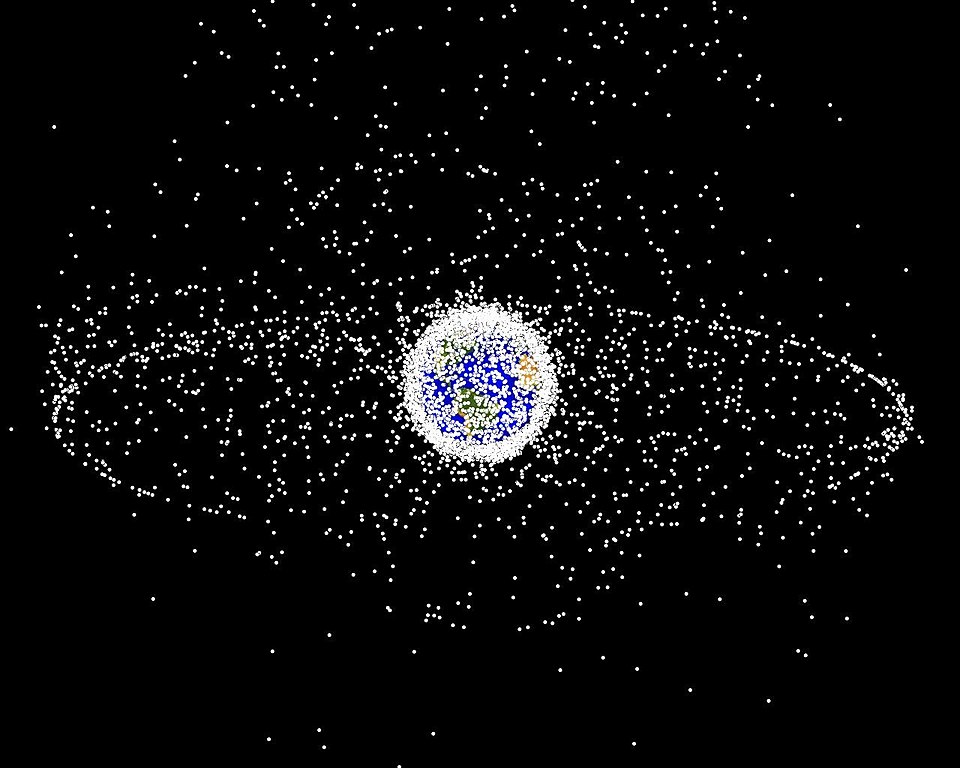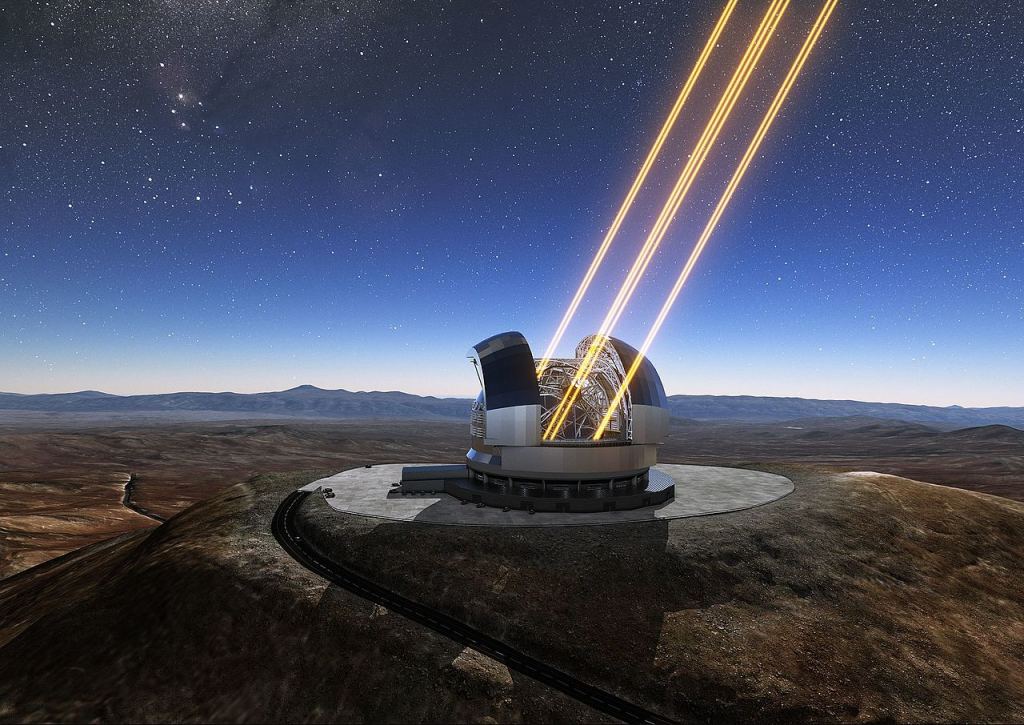Ground-Based Lasers Could Push Space Debris off Collision-Course Orbits
By Scott Alan Johnston
Researchers at the Australian National University (ANU) are finding new uses for the laser-based technology that sharpens telescope imagery – called adaptive optics – and it just might help mitigate the world’s growing space debris problem. Purpose-built lasers could give derelict satellites a slight ‘push’ of photons, imparting just enough energy to change the debris’s orbit and prevent an impending collision.
Lasers have a long history in astronomy. Telescopes in space, like Hubble, are able to take spectacular images because they don’t have to deal with atmospheric distortion (the effect that causes stars to appear to ‘twinkle’ in the night sky). But space telescopes can only be so big, so ground-based observatories can offer a lot more seeing power, with a little help from adaptive optics.
As ANU professor Celine D’Orgeville explains, “without adaptive optics, a telescope sees an object in space like a blob of light. This is because our atmosphere distorts the light traveling between the Earth and those objects. But with adaptive optics, these objects become easier to see and their images become a lot sharper. Essentially, adaptive optics cuts through the distortion in our atmosphere, making sure we can clearly see the incredible images our powerful telescopes capture.”

The system works by shining a powerful laser into the sky, exciting particles in the sodium layer that exists near the edge of space (the layer is created by meteorites burning up). The excited sodium atoms appear to the telescope like a bright artificial star – bright enough that it can be used to measure how the atmosphere is warping the light on its way back to the telescope. With this information, the telescope’s mirror can be deformed ever-so-slightly to cancel out the atmospheric effects. It has to do so thousands of times a second to keep up with constantly changing atmospheric conditions.
This technique works well for observing distant stars and galaxies, which move slowly across the sky, but ANU researchers have been improving the technology to allow it to track fast-moving satellites and space debris.
If a piece of space debris is on a collision course with another object (which happens more frequently than we’d like to think), then a tracking laser using adaptive optics could guide a secondary infrared laser to the target, which would push the space junk onto a different trajectory. A system of these lasers around the world could prevent catastrophic collisions from occurring.

Such a system is politically challenging, however. Innovation in regulation and in international space law might be needed alongside technological improvements. The misuse of trajectory-altering lasers might create a diplomatic quagmire, though the benefits of global cooperation on the issue of space junk are obvious. If we’re lucky, ANU’s research might be the catalyst for new cooperative regulations on this front.
ANU’s research also has value in the field of communications. A commercial partner in the research program, Electro Optic Systems (EOS), hopes to use the system to develop laser-based communications between satellites and the ground.
Across the board, adaptive optics are turning lasers into one of the most useful tools available to us in the exploration of space, and their future, pardon the pun, is bright.
Further Reading:
- “New laser to help clear the sky of space debris.” ANU.
- Tony Travouillon, Céline d’Orgeville, Francis Bennet, “Adaptive Optics Branches Out.” Scientific American.
- Steven Freeland and Annie Handmer, “It’s not how big your laser is, it’s how you use it: space law is an important part of the fight against space debris.” The Conversation.
Featured Image: Artist’s impression of the Extremely Large Telescope. Credit: ESO/L. Calçada.
The post Ground-Based Lasers Could Push Space Debris off Collision-Course Orbits appeared first on Universe Today.

April 16, 2021 at 03:04AM
via Universe Today read more...

Post a Comment